You may have read our introduction to Scotch whisky 101, our Scotch Guide or our Introduction to Blended scotch Whiskies in the past. If you have, you might find that it helped you get acquainted with the world of whisky, but left you with questions and an uncertainty of where to go from here.
After all, one can’t jump from Auchentoshan to Lagavulin and expect to enjoy it. Or can they?
In this guide, we’re going to take the second step in exploring Scotch whisky. We covered the basics in Scotch 101 and the advanced information in our official Scotch Whisky Guide. Today, we’re going to talk about what lies between them. Where to go when you’ve sampled a few whiskies but don’t quite feel comfortable joining a whisky club yet.
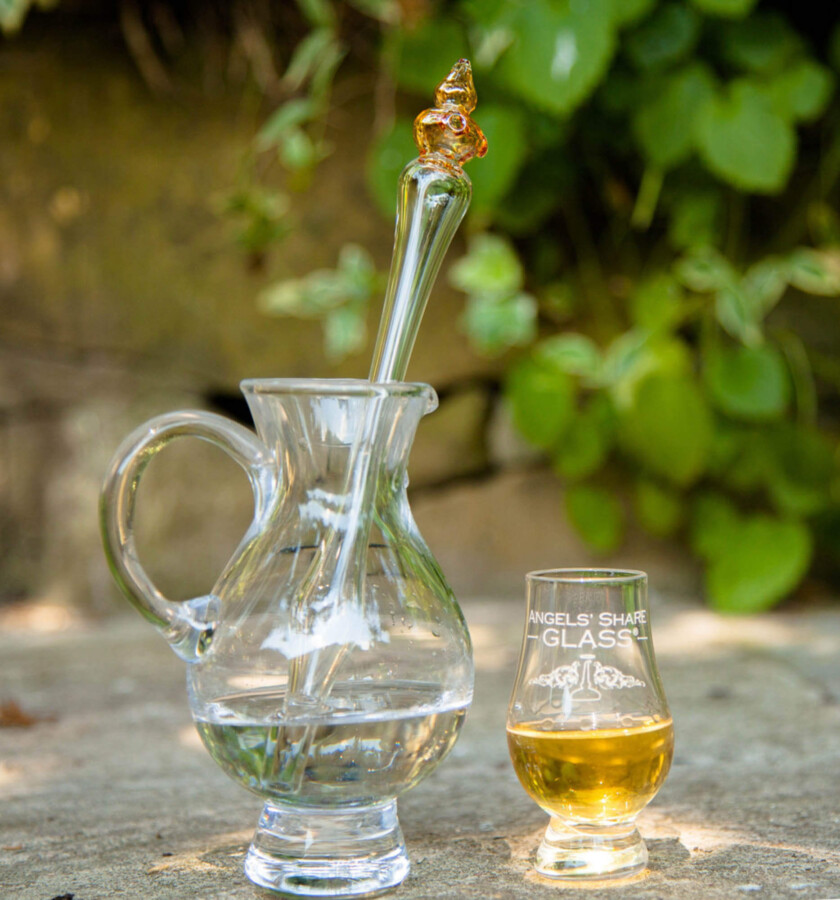
With or Without Ice
You may recall in our introduction to Scotch, I went against the trends and offended the purists by recommending you sample your first dram with ice. However, after that first dram, the only thing that should be added to the glass is a drop or two of distilled water. The goal isn’t to mask the flavours like ice does, but to enhance them by bringing the ABV down slightly so you can consume the whisky the way it was meant to be enjoyed.
So should you continue to put water in your whisky?
That’s up to you. As a whisky critic, I am sampling new whiskies every week and my personal preference is to leave the whisky untouched. If I do add water, it’s usually just to whiskies that are bottled at cask strength or close to it. If it’s a lighter whisky, I rarely add water unless I’m judging whiskies or having to sample many of them.
The important thing with water is that you can’t just use any water to open up the whisky. It must be distilled, but not over purified or it will alter the taste the same as tap water does. However, the water in Scotland is quite different than it is in the United States and contains different minerals. Since you’ll rarely be able to find the exact water used to make the whisky, you run the small risk of altering it regardless of what kind of water you decide to use. The trick is not to add too much and to make sure it’s at room temperature.
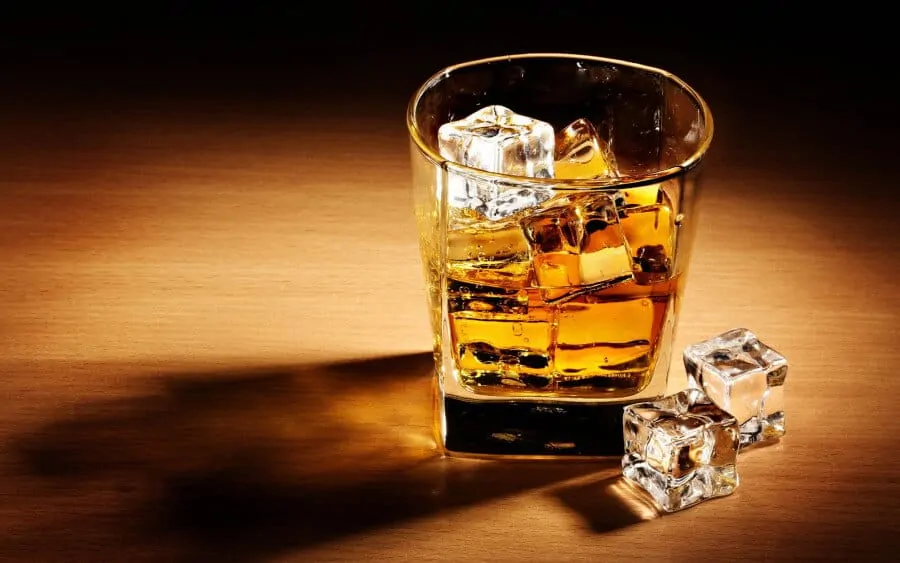
A good trick is to use an eye dropper or a small plastic spoon to add the water. The reason you want to use plastic is that a metal spoon can alter the taste of the water or introduce detergents to it. In fact, I recently did a tour of the Crown Royal distillery and we had to switch water carafes because we could faintly taste the detergent used to clean it. Anything can affect the whisky so it’s for this reason that I almost always try it neat before adding anything to it.
With that said, if you’re still new to whisky and haven’t quite made it as far as the peatier malts from Islay, adding water immediately is beneficial. The reason for this is that if you try a deep and smokey whisky like a Lagavulin or Laphroaig, you run the risk of shocking your tastebuds which can render the tasting useless. Instead, pour a very small amount of whisky into your glass, add a drop of water and take a slow sip. If it’s not enough water, add another drop. If it’s too much, use the spittoon and refill the glass. There are no hard and fast rules to it. So long as you’re not adding ice which drastically alters the whisky, adding a little water is perfectly acceptable, even by most of the purists.

Whisky Bars and Festivals
I often catch myself smiling benevolently when asked if I want to go to a whisky bar or festival. Because I live, breathe and write about whisky I rarely ever go as I’m usually disappointed. However, for the new whisky drinker, sampling a variety of whiskies at a whisky bar or whisky festival can prove to be an enlightening experience. Not only will you have a selection of whiskies to choose from, but you’ll be surrounded by like-minded people who enjoy a dram.
Spotting a Good Whisky Bar
Far too often, I’ve regrettably said yes to attending an establishment that self-identifies as a whisky bar. In most cases, it’s just a regular bar that happens to have a larger selection of whisky than most.
The bartenders are often coming from other establishments and in many cases, don’t have any previous whisky knowledge or experience. They spent their careers crafting martinis, fruity cocktails and pouring cheap wine. When asked what kind of whisky selection they had, they probably said Glenlivet and Glenfiddich. Now, they’ve entered a new world where every whisky has a different flavor profile and appeals to a different person. They’re learning on the fly and that’s okay, so long as they know how to pour it.

Here are some red flags to watch for when at a whisky bar:
They pour it into tumblers instead of a Glencairn or Copita nosing glass.
The only two glasses that one should ever use to taste whisky is a Glencairn or a Copita nosing glass. Personally, I prefer the copita due to the stem. Both glasses are designed to maximize the aroma and the flavours of the whisky. When poured into a tumbler or rocks glass, the whisky isn’t able to breathe the way it’s intended and so the shape of the glass alters the flavor profile and the aroma you smell. Another clear indication the bartender or server isn’t knowledgable is when they hand you the glass by cupping the bowl and not the stem. This warms the whisky and if they happened to touch it by the rim, introduces oils and germs to the same part of the glass you’ll have your mouth on.
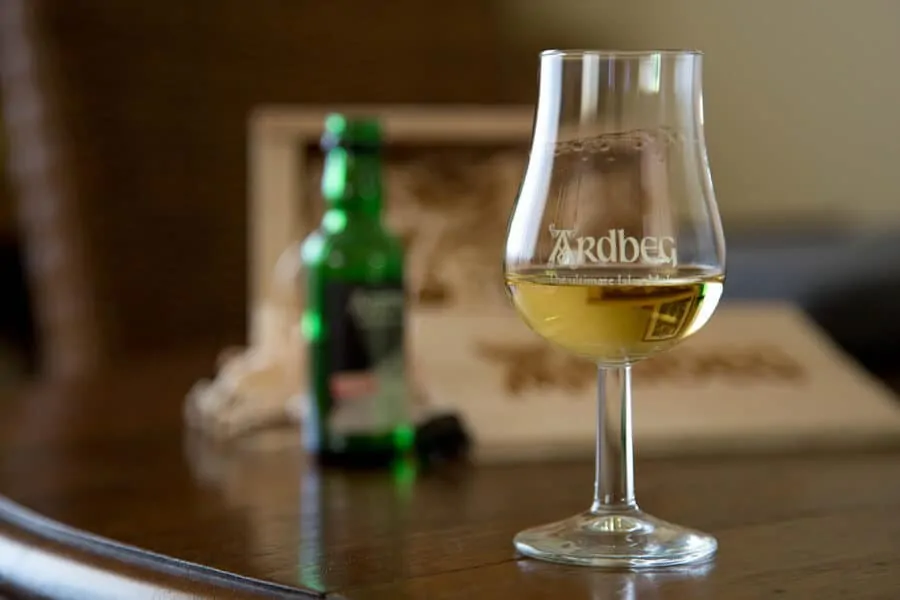
They ask if you want ice with it.
This is a pretty standard no-no. Any self-respecting whisky bar will avoid adding ice to your dram if they can help it. In fact, there are some bars in Scotland that will outright eject you from the premises if you ask for an ice cube. The bartender should only offer ice if requested and it should be a large ball or square rock or ideally, a whisky stone that’s been chilled.
They’re pouring water from the taps.
Tap water is like poison for whisky. It introduces so many different minerals that drastically affect the way the whisky tastes. If it’s not distilled water, don’t use it.
The water is cold or hot.
Always ask for your own pitcher of water. Even if you’re with a group of people. The pitcher should always be small and always made of clear crystal so you can visually inspect the water in it and so the water isn’t affected. If they don’t offer clear pitchers, ask for a small glass with water.
The reason you want your own is you’re about to put your finger in it. First, make sure your hands are clean and dry without any soap left on the skin. It’s a good idea to rinse your hands a second time after washing them. Then, as you pour the water from the pitcher, stick your index finger into the water. It should be room temperature. Too cold or too warm and it affects the whisky. If the water is right from the fridge or hot from the tap, send the whisky back and get a fresh glass. This is their fault, not yours.
They pour the water into your whisky for you instead of giving you a small glass pitcher.
Every person enjoys their whisky slightly differently and they have their own preference on how much water is introduced and at what intervals. No bartender or server should ever pour your water for you unless you’ve requested it. The only person to ever pour water into your glass should be you.
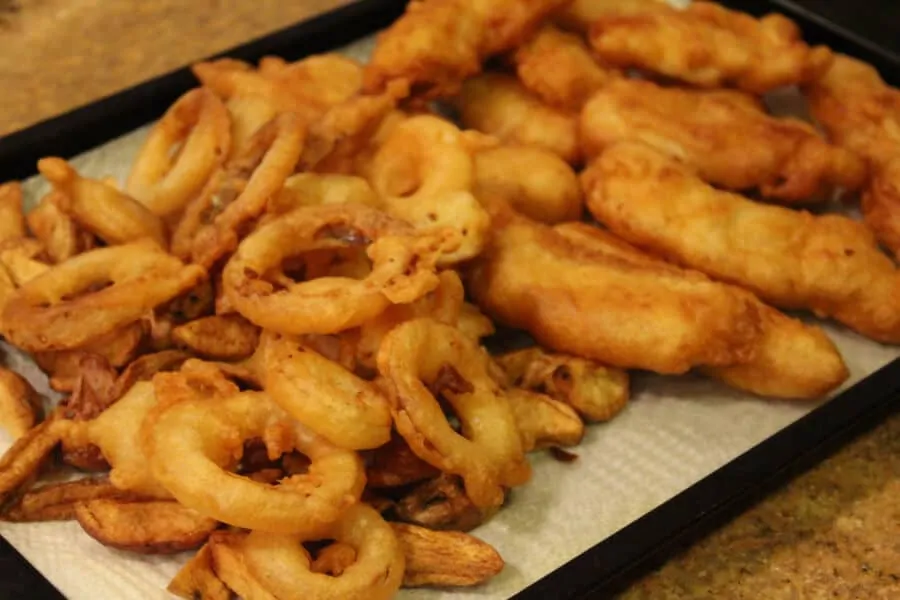
They serve a lot of fried foods or strong smelling and flavourful foods.
Whenever I’m reviewing whisky, I always do so on an empty stomach. Anytime you eat food it will affect the flavor of the whisky. It’s perfectly acceptable for whisky bars to have a menu and in many regions, it’s required by law. However, places that serve food that’s fried or strong smelling will cause the scent of your whisky to change as you nose it. The only aroma in a whisky bar should be the smell of your whisky or clean air.
The reason it’s worth looking out for these red flags is that often new whisky drinkers will rely on the expertise of the bartender to help navigate the selection. When you see a bartender that doesn’t follow the standard code of conduct, it’s a sign you shouldn’t be trusting their advice. Why spend $50 on a single ounce of whisky if it’s not going to be perfect?
The Festivals
Whisky festivals are a little different in that usually, the booths are manned by whisky connoisseurs. Often representatives from the various distilleries will be on hand to lead workshops and tastings, or you might find a few critics like myself doing a keynote. In most cases, the whisky festivals will have the proper glassware on hand and you don’t have to worry about receiving poor advice and information from them.
However, you do have to worry about the advice you’ll get from the other attendees.
For whatever reason, there are a lot of strong opinions in the world of whisky. In regular discussions with other whisky writers, it’s interesting to find that most of the people with the strong opinions have little to no knowledge of what they’re preaching. In many cases, they read something somewhere or heard it from a bartender and took it to be factual. That or they believe their personal preference is law and will urge you to drink your whisky the same as them.
The only time you should ever do such a thing is if you’re the guest in someone’s home and want to be polite. Even then, try to stick to the standards.
At whisky festivals especially, it seems everyone is an expert. They’re not. Chances are, only a very small percentage of them will be knowledgable and those people are either running the booths, presenting or covering the event as members of the press or guests of the sponsors.
If you do decide to attend a whisky festival, that’s great. You’ll end up trying a range of whiskies you might otherwise not be able to experience. However, rule number one is only take whisky advice from the recognized experts and even then, take it with a grain of salt. It’s all just opinion.
How to Enjoy Whisky with Company
In the privacy of your own home, you can drink whisky however you like. Put it in boiling water, add milk, a tray of ice cubes, a can of cola, it doesn’t matter. There is no one there to judge you. However, if you happen to have company over or you’re a guest in someone else’s home, there are a few key tips to ensure you can enjoy the whisky without offending anyone in the room.
Just use the tumbler
Most people don’t own actual whisky glasses. If you’re the guest at someone’s house and they offer you a dram, expect it to arrive in an old-fashioned glass. You’ll survive. After all, a little whisky in a tumbler is better than no whisky at all.
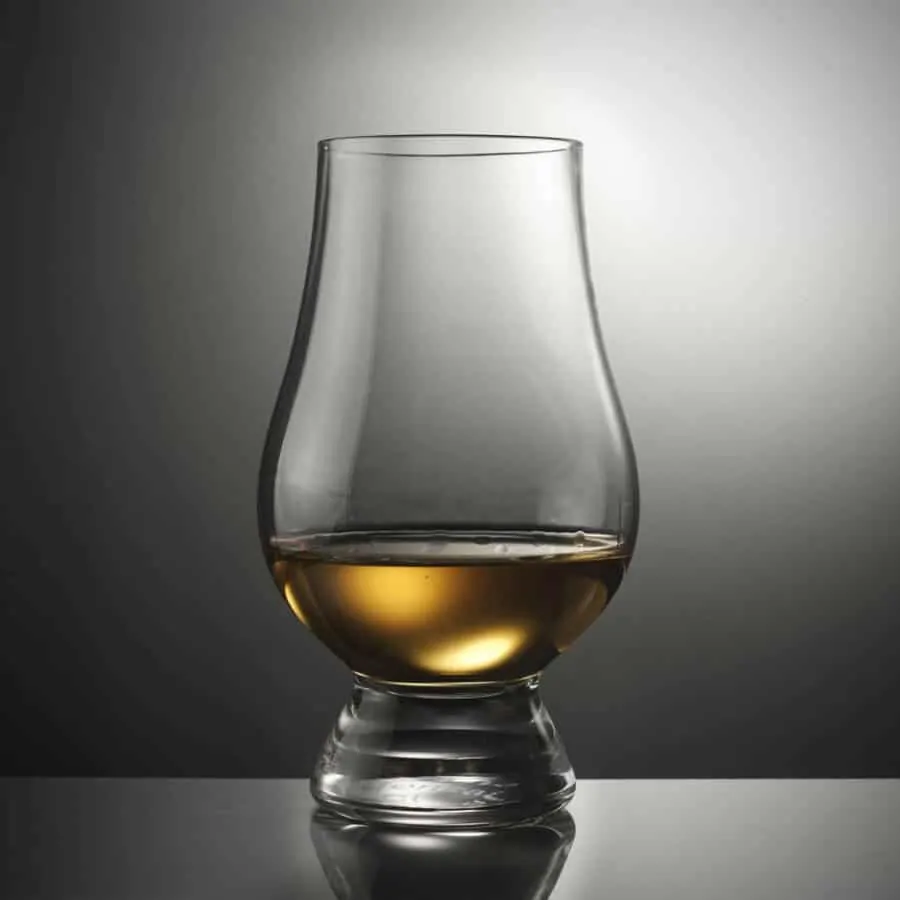
Be honest about your preferences
Unless they have just a single bottle, most people will ask you what kind of whisky you enjoy. That or they’ll select a bottle from their bar and ask if you’d like some. This is the time to be honest and admit if you don’t like it or need some help selecting one.
“There is no such thing as bad whisky. Some whiskies just happen to be better than others.” – William Faulkner
Whisky is like wine in the sense that no two are the same. You might love a light, gentle dram from the lowlands but gag on a peaty dram from Islay. The last thing anyone wants is for the dram to go to waste and have to be dumped. Whisky is expensive so if you don’t like a bottle that’s offered, be polite but honest. The host would much rather offer you a different beverage than have their favorite malt wasted. On the other hand, if you’re not familiar with it, let them know. Ask to try just a small dram and then pour some more if you enjoy it.
If you must, take it with ice
If you have the option of saying no, ask for water or to have it neat. However, if they come back from the other room with a glass of whisky full of ice, take it in stride and enjoy it. This is basic whisky etiquette. Don’t make them feel inferior by telling them how they’re ruining the dram.
Don’t choose based on price and age.
A thirty-year-old Highland Park is going to be far more expensive than a 12-year-old Balvenie. However, the Balvenie is still a very nice whisky with a lovely flavor profile. If you are given the choice of what you’d like, don’t select the oldest bottle or the most expensive. Chances are, your host is saving it for a special occasion. Instead, have what they’re having or ask for a dram of something younger and less expensive. If you can’t figure out which whiskies they covet, never discuss price. Here are a couple of tips to find a lower priced dram in their bar:
- Look for younger bottlings. In most cases – but not all – the younger the year, the cheaper the bottle.
- Select a bottle that’s been heavily consumed. In other words, don’t pick the bottle that’s still corked or almost full. Try one that’s half empty. You should also avoid bottles that are almost empty as that’s a good indication it’s a favorite.
- Look at the lower shelves. If they have a shelving unit in their bar, most people reserve the top shelf for their favorite bottles or the more expensive whiskies. Stick to a lower shelf.
- Pick one without packaging. Most whisky lovers don’t keep the boxes or decorations that come with a basic bottle of whisky. However, some will keep the packaging from a rarer or more expensive bottle. If there’s a whisky still wrapped in packaging or displayed with it, pick something else. Chances are if it’s the only bottle with packaging, it’s probably a favorite.

At Your Home
If it’s you pouring the dram for guests, there are few tips to keep them comfortable and make the experience more enjoyable.
- If they’re new to whisky, don’t try to show off with a bold bottle. Recommend something lighter and move from there.
- Instead of offering them any whisky you have in the bar, pick two or three different bottles and have them choose from that selection. This way, you won’t be the person having to pour an expensive dram that you were saving for a special occasion.
- If you only have one or two bottles, explain that to them and ask if they’d like to join you for a dram or if they’d prefer something else.
- Before pouring, ask if they’ve tried it before. If not, then pour just a tiny amount and offer more if they enjoy it or a different dram if they don’t. This way, they won’t feel obligated to drink it.
- Offer ice. Unless you know that they enjoy whisky without it, ask how they take their whisky and what kind of glass they prefer it in. By keeping the options open, they won’t feel bad about asking for a few ice cubes in their tumbler.
- Discuss the whisky. There’s no need to be an expert and even experts discuss whisky. I recently sat in a sensory room with a few distillers and every one of us noticed something unique in each dram we tried and all of us drank our whisky slightly differently. Enjoying a dram with a guest is a great way to open the lines of communication or break the ice if it happens to be the husband of your wife’s friend you’ve never met. Instead of making it an educational session, discuss various whiskies, share stories and explore the flavors with each other. You might just learn something new or notice a flavor you previously missed.
- Pour their whisky, not their water. As a host, it’s proper etiquette to pour their dram for them unless requested not to. However, that is all you should pour. If they ask for ice, bring it out in an ice bucket with a pair of tongs. If they want water, pour it into a small glass pitcher and allow them to add is as they please. Whisky is a very personal experience and unless they ask you to do it for them, it’s akin to hand feeding them at the dinner table. It’s just something you don’t do.
Recommended Bottles
By now, you’ve probably tried a handful of whiskies. Perhaps you sampled the Auchentoshan and Dalwhinnie we recommended in our beginners guide, or maybe you’ve moved into the stronger whiskies like Lagavulin and Laphroaig. Since this article is still for beginners being introduced to the dram, we’re going to recommend some medium bodied whiskies that are a little stronger than the Auchentoshan and quite a bit lighter than the Lagavulin.
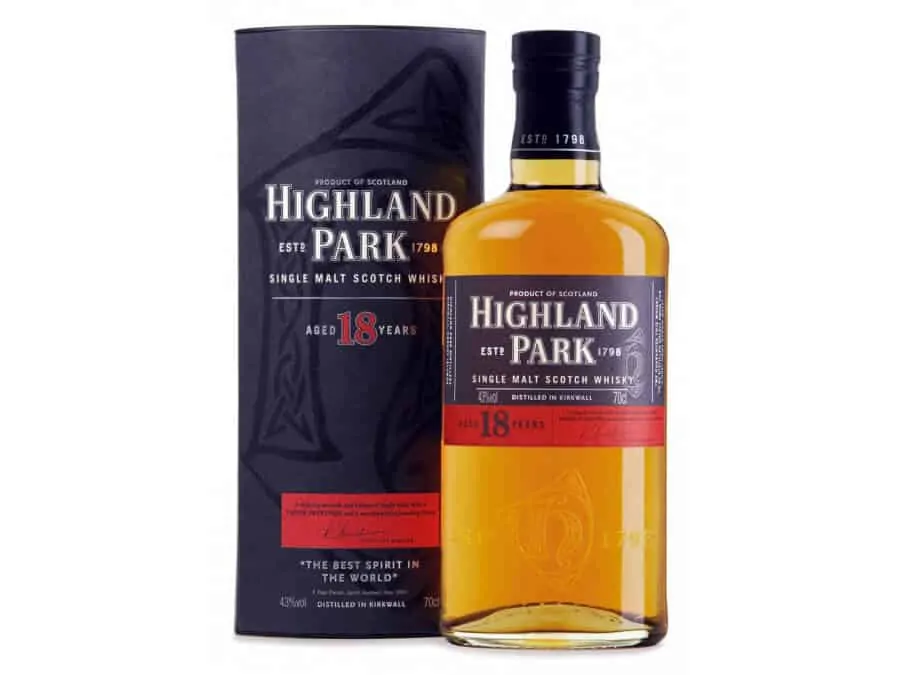
Highland Park 18-Year
One of my favorite whiskies, the Highland Park 18-year is, in my opinion, the finest whisky under 20 years. Reasonably priced at just a few hundred dollars, the 18-year has a remarkable flavor profile that grows and flourishes with each sip. It’s a rich whisky with perfect blends of sweetness and smoke. The nose is light, at first, getting stronger with notes of baked apple, vanilla, toffee and tobacco. The flavor on the palate builds from honey and fresh fruits to vanilla bean, pepper and more toffee. As the dram progresses, the fruits get riper and finish with lovely notes of figs, plums and dried apricot. There’s a taste of leather and tobacco that’s finished with rich espresso. The vanilla gets creamier and the pepper turns to smoke and then gets spicy on the finish. The finish is quite long and ends with a creamy layer of caramel and vanilla. The best whisky under $500.
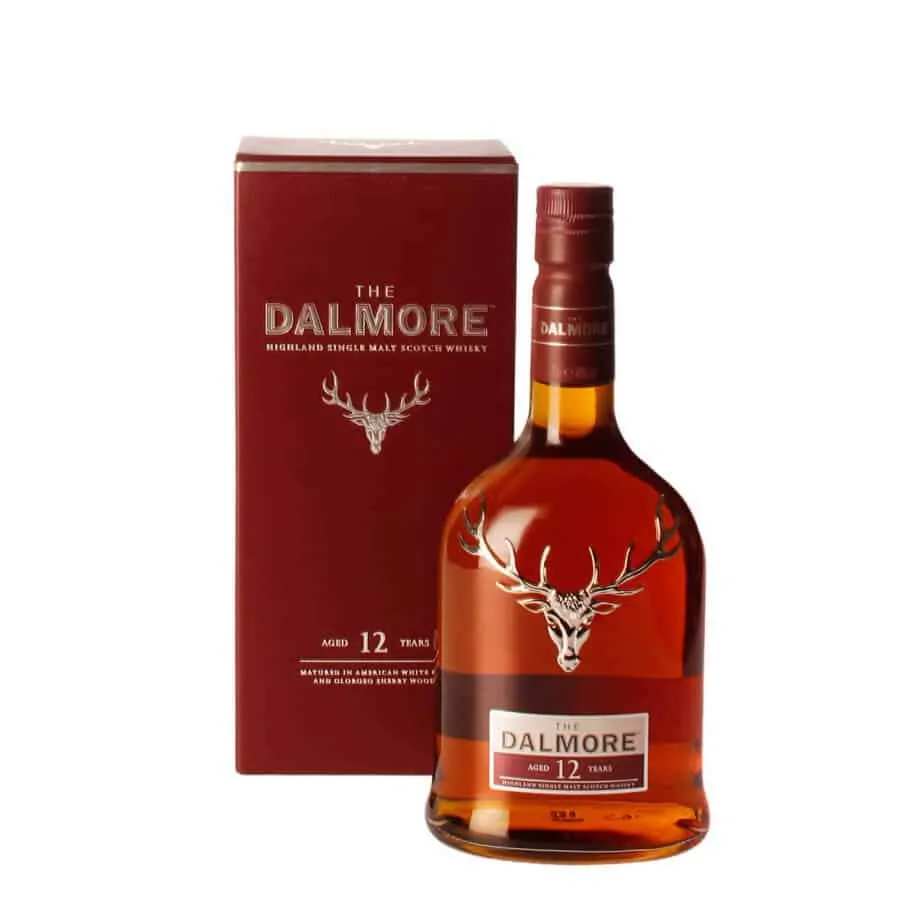
The Dalmore 12-Year
A superb daily dram, the Dalmore whiskies are arguably some of the finest malts created. If you’re a cigar smoker, I’d recommend the Cigar Malt which was expertly crafted by Richard Patterson and pairs harmoniously with almost any light to medium bodied cigar. Otherwise, for a budget bottle, the 12-year Dalmore is a perfect choice. If you enjoy coffee in the morning, you’ll adore this dram in the evening. The nose is full of fresh, whole coffee beans with toasted almonds and cereal. On the palate you’ll immediately notice the malted barley and churned butter which gives it a desirable oily mouthfeel. There’s bursts of ripe oranges and a hint of jam with prunes, dates and dried apricot. The finish gets warm and sweet with the introduction of toffee and cocoa. The flavor profile comes at you like the waves of the sea, first hitting you hard before receding and coming back with another flavor and experience. The very end of the dram has a burst of freshly picked oranges.
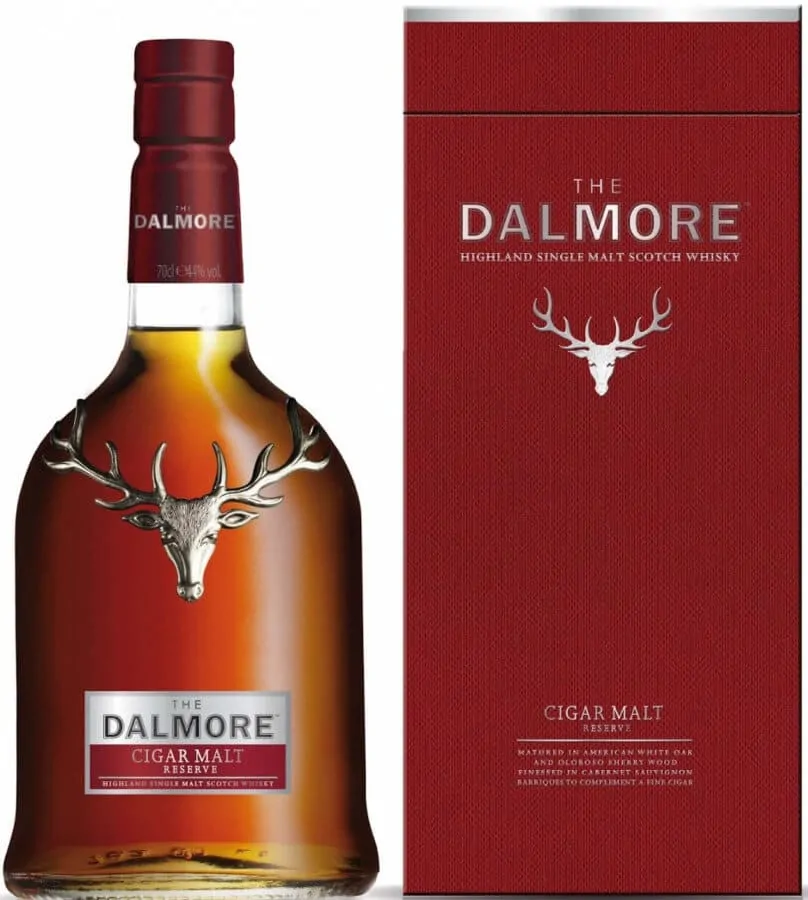
Aberlour a’Bunadh Batch 49
Bottled at cask strength, this bold whisky might need a touch of water to open it up. It’s nose is strong with notes of musty leather, light wood and oil. As you take a sip, you immediately notice strong notes of citrus and rind with hints of fruitcake and roasted nuts. The finish is long and very complex with dark chocolate, toffee and spice. This is one of the best whiskies at this price point and one that is a great introduction to some of the fuller-bodied whiskies from the other regions.
Conclusion
There is so much about whisky that we haven’t touched on yet. That’s really the beauty of it though, is that it’s a long conversation you can experience over time. For now, this second introduction to the dram should help guide you to try new whiskies and experience them in a positive way. Stay tuned for part three where we’ll discuss how to taste the whisky and differentiate its flavours and aromas. We’ll also talk about how to buy a bottle of whisky that you’ve never tried.
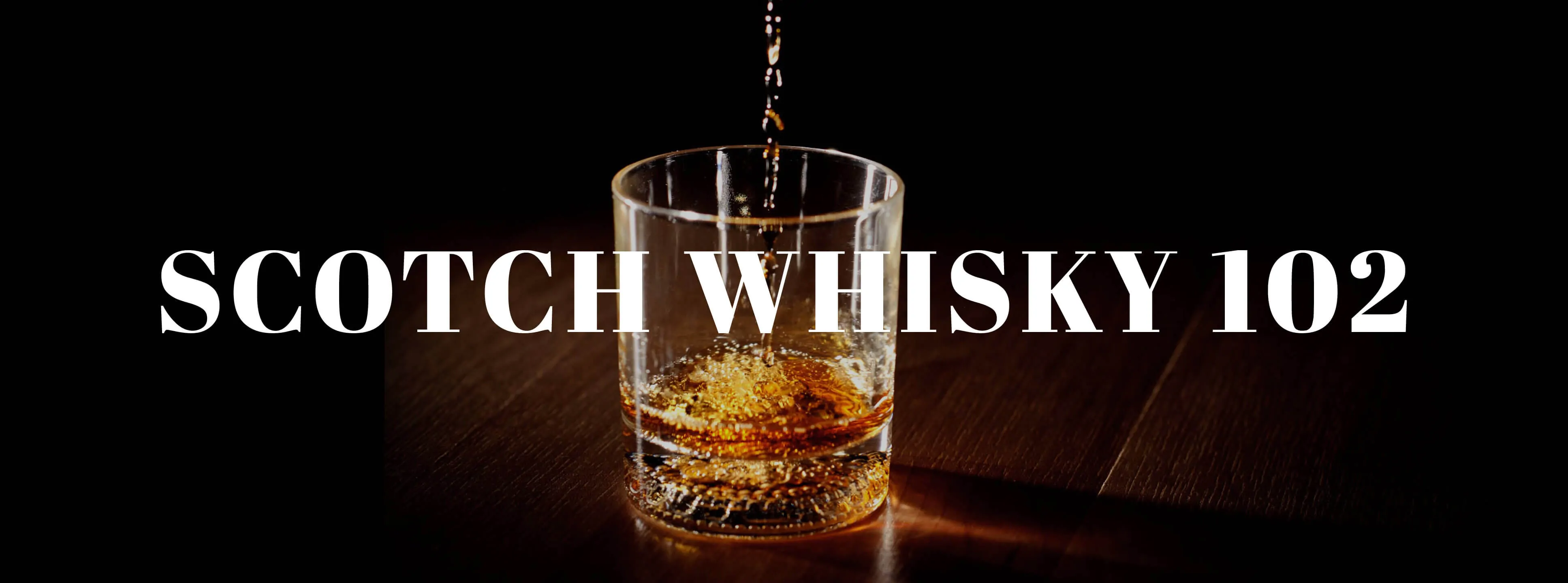
Fun article. I will admit, I’ve tried the “Glens” and I tried Laphroaig – which was like sucking on a wet, intensely mossy, burnt log – and what I’ve found for me is that the simplest is best. Don’t laugh, but I enjoy Cutty Sark and I’ll most often take it neat from a chilled bottle – horrifying to some, I’m sure. It’s got a light flavor I like and it doesn’t cost much. My palette is not well trained yet. Some stuff tastes like pure iodine while others like a mouthful of green smoke. Cutty may not be sophisticated but I’m comfortable with it, at least for now. Cheers!
@Joe – no-one should laugh; there’s nothing wrong with Cutty Sark, if that’s what you like drinking. I’m a member of a few whisky clubs, one of which will try whiskies blind (no knowledge of the identity until the end of the tasting), and we’re amazed every time with the quality of blends like Cutty Sark. What makers of blended whisky (like Cutty, Chivas, and others) strive for is consistency, so that anyone anywhere in the world has the same experience. Scotch whisky can only be made from barley, water, yeast and a tiny amount of coloring, yet the spectrum of flavors is broad. The key is to enjoy in good company – it almost always tastes better when drinking with good friends.
I’m enjoying a Balvenie Caribbean Cask that I got for Christmas.
Scott, While not everyone enjoys the rum flavor that is imparted from the rum casks, I love it. It gives the scotch a whole new vanilla and spice flavor profile and separates this Balvenie 14yr from the offerings from other distillers. David Stewart (The Balvenie Malt Master) is my new hero.
Recommanderiez vous l’EAU en provenance de la Maison ICE au Canada – Eau récupérée à partir des ICEBERGS – en place de l’eau distillée – Merci pour votre réponse –
I love scotch. One of my favourites is the Glenfiddich 15 year old. It’s honey and rich fruit flavor, aged in European oak sherry casks.
I highly recommend it.
Ice? ICE?!
Never, say never but very few Scotch’s will ever benefit from having ice added nor will they reveal their complexity when drunk neat. It’s not the peat in the whisky that shocks your taste buds, it’s the alcohol, diluting with a touch of water to around 35% means the whisky will open up to reveal it’s true character.
I 100% agree with Paul that around 35% is ideal, and if your whisky needs ice to improve its taste and aroma then by all means put some in, but so long as you pour it immediately down the sink!
I, personally, would never offer ice. If a guest requests it, one can recommend they don’t take ice, but still allow them to do so. After all, one doesn’t offer tomato ketchup to pour onto a Tournedos Rossini, or HP sauce to douse the gravadlax!
Always, always rinse the washing up liquid off your glasses and water jugs.
And, when toasting with whisky, one should always say ‘slàinte mhath’ (sounds like: s’ laanch a vaa) or another appropriate Gàidhlig toast.
Now where’s my dram of Balblair, or shall I have an Old Poultney, or maybe a Laphroaig, or a Clynelish…
May I recommend BenRiach, their entry level 10 year old, the peated curiositas and the 16 year old offer excellent value for money. The now deleted 12 year old is also superb.
If you are UK based, in my opinion, you’ll struggle to find a better value ram anywhere than Aldi’s highland black too.
*dram
Of course you may, thanks for sharing.
What I appreciate most are the paragraphs talking about etiquette. Always being considerate to others. This is what a gentleman is about, as opposed to showing off one’s knowledge of wine, shoes, suits and etc.
One should never show off ones knowledge, but a gentleman should never be afraid to educate…
Wise words
I think it should be pointed out that Dalmore discontinued the Cigar Malt back in 2009.
Thanks Mitch!